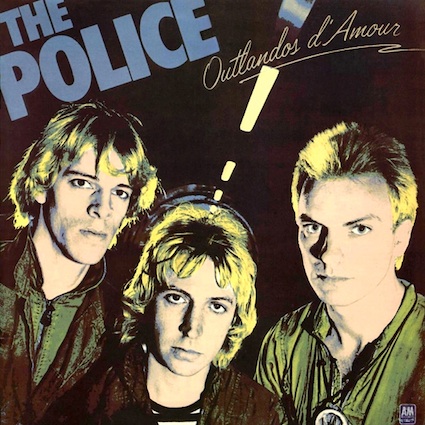I’m going to tell a story and get all wordsmithy in a bit here, so for those of you who are not interested in such a thing, here first are some facts for you regarding Bach at the Sem, the May 7th performance, and what performers for that concert have been told. If you have information that contradicts my understanding, please send me an email to let me know so I can make corrections to this post.
- The American Kantorei (the chorus for Bach at the Sem) was informed a few weeks ago that the May 7th performance is set to be the final performance for our group and that we will not have a season next year.
- To my knowledge, no announcement has been made to the patrons of Bach at the Sem, no mention of this being our final performance has been posted to any social media or other communications channels, and no releases have been made to the broader St. Louis arts community regarding this fact.
- The reasons given to us for the end of our participation have been that fundraising had not been successful and that the seminary cannot shoulder the burden of paying for the costs to bring the concert season to the St. Louis arts community.
- The only word from the seminary I’m aware of is the following response to a Facebook post I previously made:
As we look ahead to the 2017-18 academic year — during which the milestone 500th anniversary of the Reformation will be celebrated — we are looking at how best to offer the music of Bach to the St. Louis community and beyond. We look forward to sharing our program schedule as soon as the dates and details are worked out.
- No mention of any further program as alluded to in that quote has been provided to the American Kantorei at the time of this writing. As far as any of us know, the May 7 performance is our final one as an ensemble as part of Bach at the Sem. I do not have any inkling as to what the planned program schedule for next year may contain.
As it’s not clear to me whether people are aware of these facts, please share this post among your social media channels if you are willing and able. It is my hope and prayer that the attendance at the May 7 performance is greater than the space can bear, to show to Concordia Seminary the value the St. Louis community places on this concert series.
Again, if you have any information that would either shed light on these facts or would contradict them, please contact me via email as soon as possible so I can make corrections to this post. I reached out to the Bach at the Sem publicity account on Facebook to ask if they would like to provide a statement for this post as well, but at the time I published it, they had not yet responded. Should they do so, I will likewise update this post.
Those are the facts as far as I know them. Now, to that story I warned you about…
Prologue
I was a freshman in college, and with zero choral experience, I’d tried out for the Concordia University Kapelle on a whim. I had no formal voice training, but a very trusting person by the name of Kurt Amolsch took a chance on me.
That spring, he gave us the first choral score I’d held that was bound like a book. We sight-read the opening chorus to the St. John Passion—my first experience with the music of Johann Sebastian Bach.
I couldn’t keep up. There were so many notes on the page. So much was going on at once. I stopped singing and did my best just to follow along. I was clueless and adrift, feeling a fraud amongst others who had seemingly instant command of the material compared to myself. Bach had defeated me.
I left rehearsal crying, thinking that I could not possibly learn to sing such technically demanding music.
Two months later, I had a passable command over the material. We performed the work twice that spring. The St. John Passion remains one of my favorite works in the history of music.
Learning Bach
As a first year seminarian, my wife had seen the call in the school’s daily announcements for open auditions for something called Bach at the Sem. She convinced me to try.
I still didn’t know what it meant to audition for a group. I had no prepared material. I had only a single quarter of vocal teaching. I had no formal sight-reading training. (I still largely learn by ear, a fumbling of trying to read notes off the page, a lot of effort, and a sharp memory for music.)
Robert Bergt brought me into the American Kantorei, the group he had founded and then directed. He had been a student and teacher of Johann Sebastian for many years, and he imparted that knowledge and love not only of Bach but also of the broader baroque to those would listen.
I listened as much as I could.
For ten years, I performed with the group under his direction. It took many attempts for me to understand what I was doing, and in some ways I still don’t. He continued to trust me to be part of the music.
After Robert’s death in 2011, Bach at the Sem engaged in a series of tryouts to find the right director to take the helm of the program. I stuck with the ensemble, hoping to see the process through and learn from someone new. For the last few years, I have learned the music of Bach in a different and complementary way from Dr. Maurice Boyer, whose presence to the program has been a boon. He has also trusted me to bring my talents to the American Kantorei.
I have now been with the group for fifteen years, learning, sometimes struggling with, and performing the music of Bach. In my uneducated and humble opinion, the artistry of his music is unmatched. It transcends notes on a page. It conveys messages, emotions, and understandings that are more than the sum of its parts. Each piece I learn is burned into my mind.
It is in no small way a part of my life.
Generations
In those same fifteen years, we have added five children to our family. They have benefited directly from Bach at the Sem and the American Kantorei. We have brought them to performances from a very early age, provided them with music with which to follow along, and encouraged them to engage with the works of Bach.
As a seminarian and later a working parent, and not always one of means, I have always been proud of the gift Bach at the Sem has provided to the arts community of the St. Louis area. My wife brought my children to these performances for absolutely no charge, and they could learn through the artistry of the accomplished musicians performing the material as well as the scholarly program notes provided for each piece of the gift of the music of Bach.
I believe it has enriched their lives and brought them joy—not to see their father standing at the front, but to know and learn this music as patrons. And this has been made possible by the exceedingly generous free admission to all Bach at the Sem performances, in turn made possible by generous donors and the seminary as host.
I’m sad and disappointed to lose this resource, not only for my own family, but for other young people who may not now have the opportunity to sit at the feet of Bach and learn from his virtuosity.
Epilogue?
So, here I am, almost a full twenty years from being that adolescent who was thrown into the works of Bach and left crying, feeling a fraud.
I still feel like one from time to time. It takes a lot of work for me to prepare the music. I have been fortunate to learn from not only good directors, but talented instrumentalists and vocalists standing beside and around me as we bring to life the works of this 18th century composer, who is the author of hundreds of instrumental and choral masterworks.
The selections for what appears to be our final performance could not be better. They are meditative and benedictive works, drawing on themes of evening and of the need for protection and safety from an uncertain night. Bach knows from where this protection comes. He demonstrates so in the music.
Bach at the Sem has been the sole output for my musical talents for the last fifteen years. I find it hard to contend with the reality that I will soon unwillingly be forced to say goodbye, to watch the evening fall on something I and so many others have worked so hard to make a worthy endeavor.
And so, I am sure there will be some in the audience who will wonder why I am crying on May 7, as both figurative and literal evening comes. It will not be because I am unable to contend with the technical nature of the work of Johann Sebastian Bach as so many years ago, but because I will be unable to contend with its emotion.





